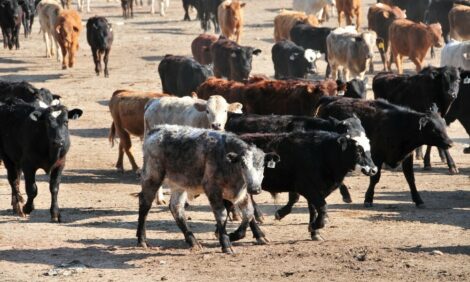



Improved Disease Diagnostic Testing Starts with Standardizing Lab Methods, USDA-approved Kits
US — In conjunction with the American Association of Veterinary Laboratory Diagnosticians (AAVLD) and U.S. Animal Health Association (USAHA) meetings held recently in Kansas City, Missouri, experts talked about the need to implement consistent standards for all types of food animal-disease diagnostic testing.They agreed that having standards at each stage of the diagnostic process — from on-farm sample collection to laboratory testing and the interpretation of results — is the best foundation for providing diagnostic results veterinarians and livestock producers can trust time after time.
“Diagnostic standards are in place for state and federal regulatory testing, but that represents only a small fraction of the testing done in diagnostic laboratories,” said Dr. Bruce Akey, a veterinarian and director of the Texas A&M Veterinary Medical Diagnostic Laboratory. “U.S. Department of Agriculture (USDA)-approved diagnostics have built-in standardization, but additional steps must be taken to validate and verify results of the other diagnostic tests developed by individual laboratories.”
Guidelines for new diagnostics
Relatively new guidelines developed by the AAVLD have given member laboratories a process to follow, and specific criteria for validating and documenting development of new assays.
“Previous methods used to validate new diagnostic tests varied widely across the country and throughout the world,” said Johnny Callahan, Ph.D., a senior consultant with Thermo Fisher Scientific, a company with deep expertise in animal diagnostics. “Many laboratories now are making a great effort to base new assays on these guidelines, completing extensive documentation to validate results.”
These guidelines are particularly important when working with emerging diseases. For example, several years ago when porcine epidemic diarrhea virus (PEDv) was discovered in the United States, one challenge was to develop a test that could identify the exact virus and then reliably find it.
“To their credit, veterinary diagnostic laboratories quickly started developing tests to detect PEDv,” said Akey. “They all did a fine job, but without agreed-upon standards to validate equivalency of results between the different labs, it was possible the interpretation of test results could vary among labs. Now, following AAVLD guidelines helps ensure equivalency, which means both lab technicians and veterinarians can have the confidence they need in the test results — even when responding quickly to an emerging disease.”
USDA licensing for some diagnostic tests
With 43 AAVLD-accredited laboratories as well as additional labs conducting numerous types of diagnostic tests, many of which were developed by individual labs, the effort needed to ensure all tests meet agreed-upon standards is huge. That is one reason why more laboratories are using USDA-licensed diagnostic tests to provide consistent, standardized results to their veterinary and producer clients.
“For a diagnostic to receive USDA approval, documentation must prove the assay provides consistent results and meets stringent quality standards,” explained Callahan. “Having this information already in place can significantly lessen the documentation burden on AAVLD-accredited laboratories. Beyond that, these diagnostics also meet very high USDA manufacturing requirements, delivering consistency that is difficult for individual labs to achieve when making their own batches of assays.”
Smart consumers of diagnostic services
As veterinary diagnostics move toward greater standardization, experts recommend that veterinarians and farmers become more engaged in determining the diagnostic services best-suited for their businesses.
“Veterinarians and producers should be smart consumers of laboratory services, just like they are smart consumers of buying tires, a new truck and other important investments,” said Akey. “They should ask laboratories about their processes for validation and verification, whether they are accredited by AAVLD or the National Animal Health Lab Network, and whether they use USDA-approved assays. It’s incumbent upon us, as laboratory directors, to serve our clients in the best way possible and to make sure they get solid diagnostic results that are comparable lab to lab.”
TheCattleSite News Desk




